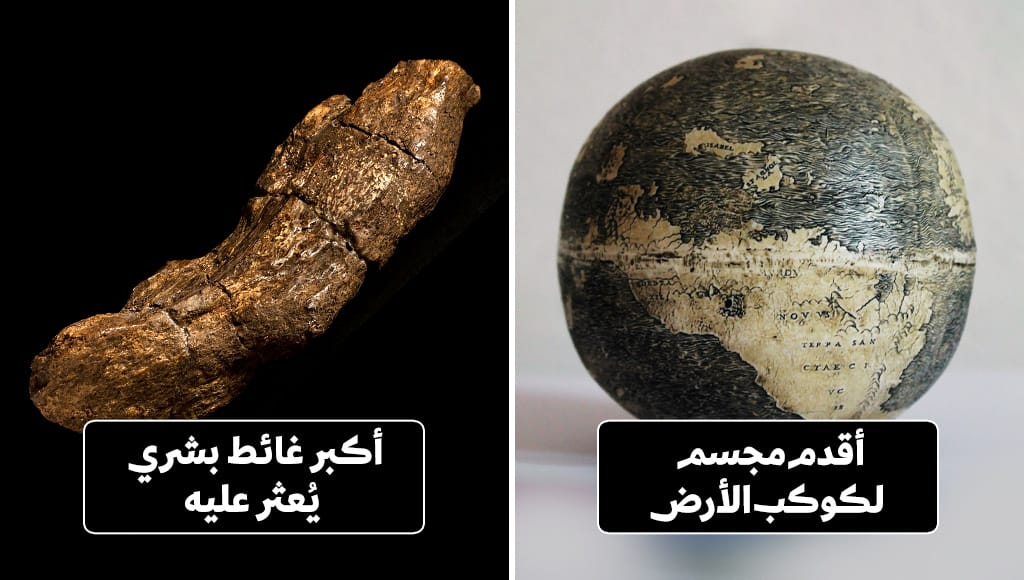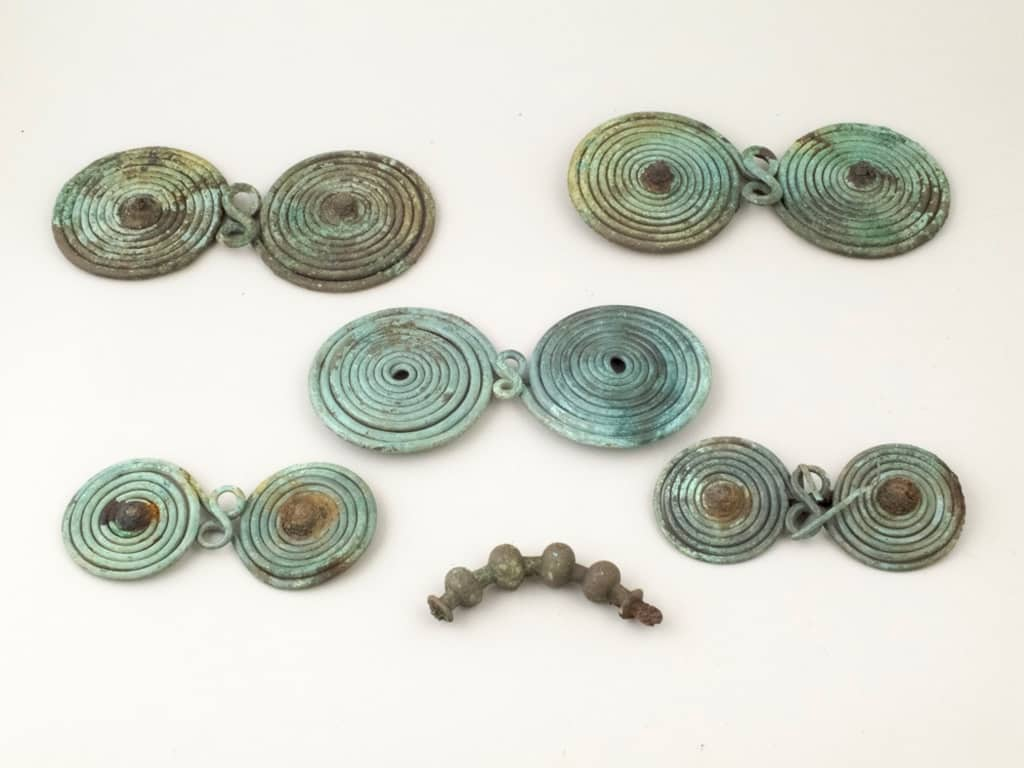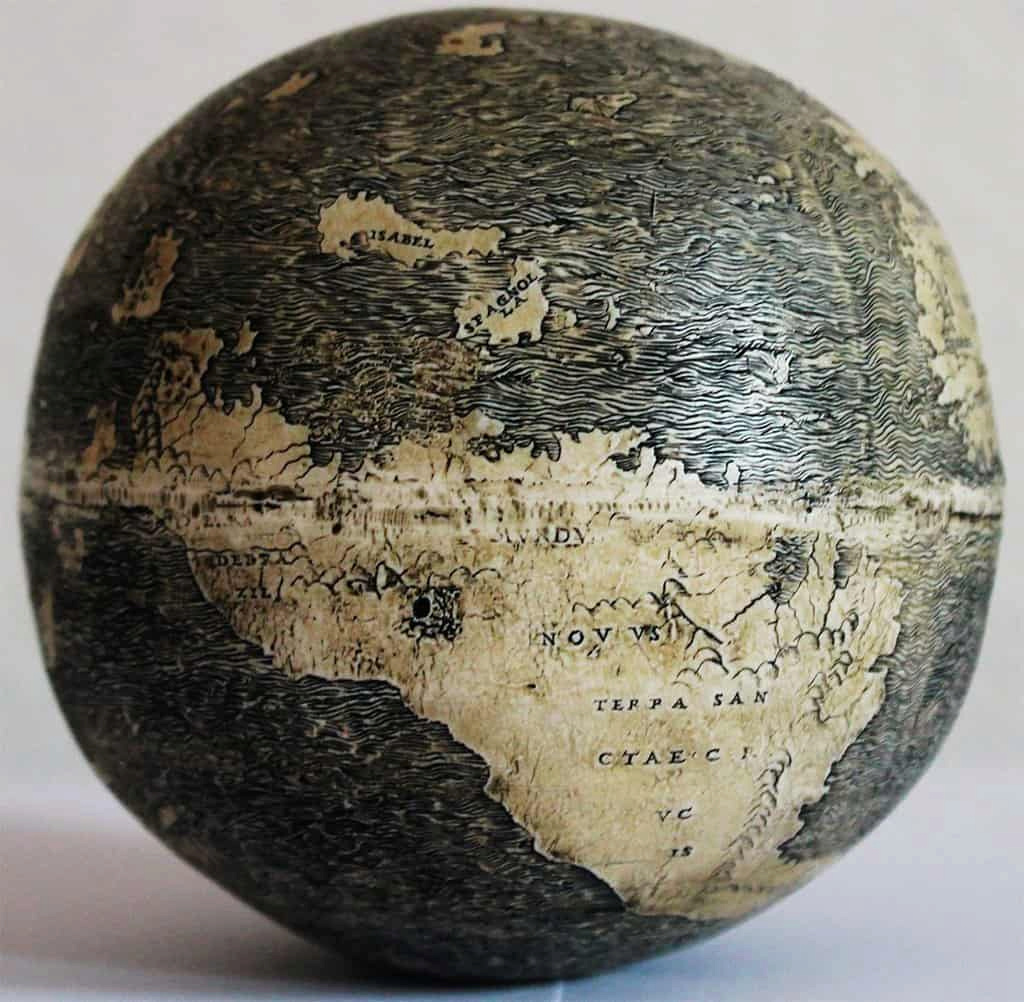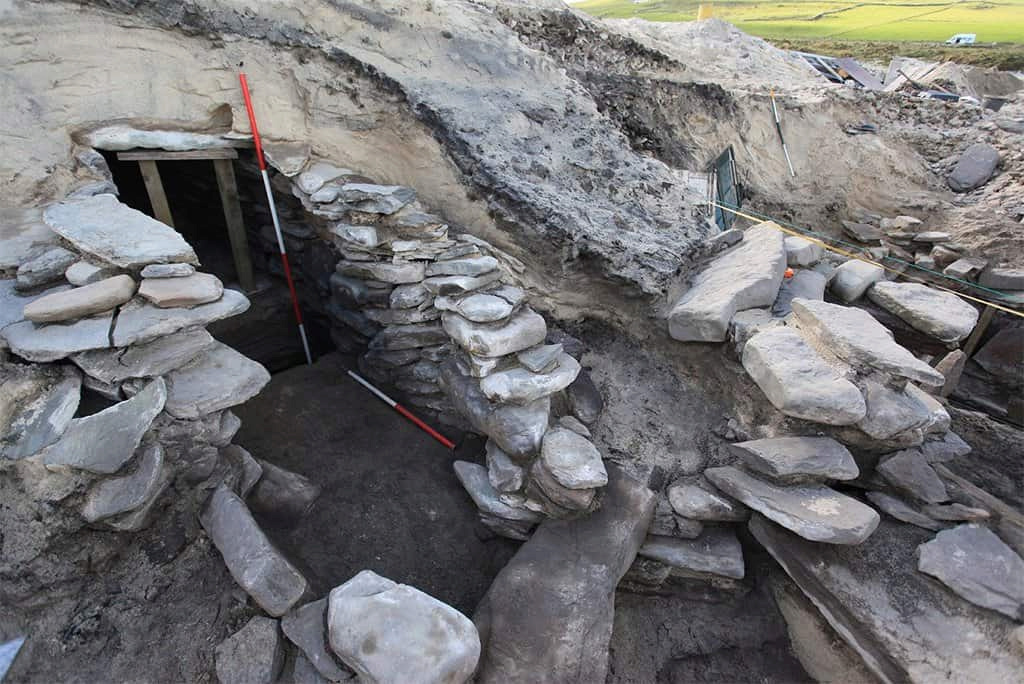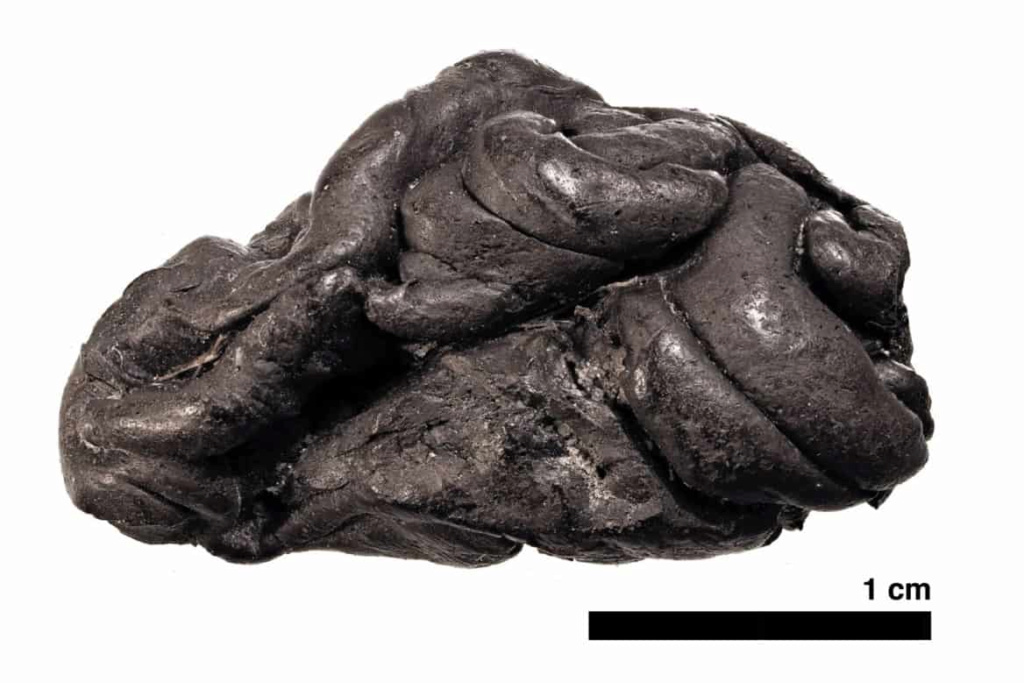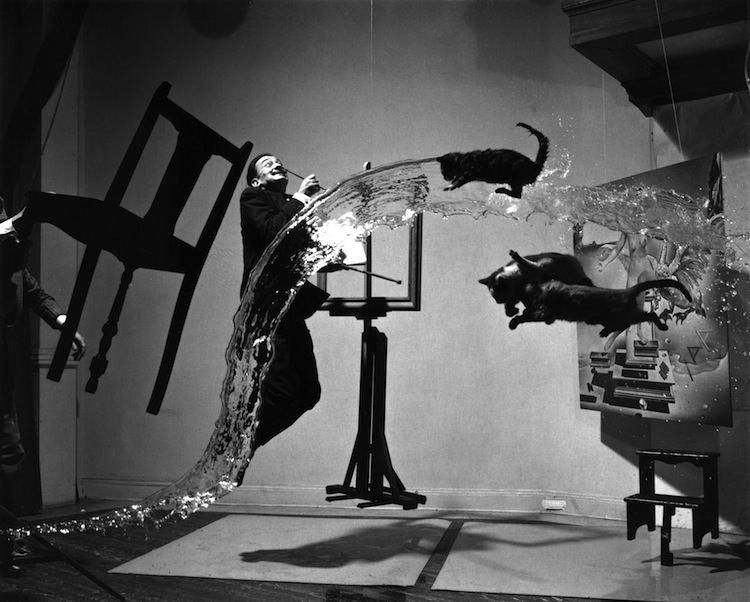12Of the strangest archaeological discoveries ever
Many archaeological finds are similar in nature to each other. Whatever area a group of archaeologists may be excavating, most of what they may extract is either pottery or coins.
There is nothing wrong with these archaeological human artifacts and arts that date back thousands of years in history, except that you will not see in this article on our website “your income by knowing” any coins or pottery, because we will discuss in it some of the strangest archaeological discoveries ever, continue reading with us :
1. Treasures of Transylvania:
There is no better place to start our article on the famous (Transylvania) located in Romania, which was said to be the home of Count (Dracula). We don't think that the discovery we're going to tell you has anything to do with myths or vampires, but it's strange in itself.
In 2015, the contents shown in the image above were discovered in an ancient cache of weapons and treasures, which have been buried underground since the Bronze Age.
It is interesting to know that even before coinage appeared in Europe, people were making amazingly detailed and decorated items like this one. Most of these objects were made of bronze, while some of the spears and small swords were made of steel.
These archaeological objects were not found after a planned search, rather their discovery was purely by chance after excavation works in order to build a new road in the area.
The finding of 300 archaeological objects combined in this way suggests that they were deliberately buried, perhaps as a gift or offering to the gods or an offering to the spirit of an ancient warrior.
2. Denmark Golden Statues:
Our next stop in this article is Denmark, where these small golden statues were discovered in 2013.
In all, five golden statues were discovered in the same field in the same area called Bornholm, which suggests that they were deliberately buried together.
Experts studied these objects closely and concluded that they were made during the Iron Age, perhaps sometime in the sixth century BC. It was the fifth statue discovered in this group that puzzled researchers, as Nordic art during the Iron Age usually focused on Manufacture of male figurines, but this small statue represents a tall and slender naked woman with a prominent jaw and a long head with her hands folded together towards her chest as if she was praying.
Experts in the ancient Norse art of this era believe that they may be a symbol of fertility, but this remains only a guess, and what remains certain is the quality of the craftsmanship in these statues, as it seems as if someone spent a long time creating these statues with great care and concentration, and the reason remains unknown.
3. Oldest anthropomorphic planet Earth map of the New World:
Nowadays, if you want to make a holographic globe or a map of the world, all you have to do is get the aerial photos taken by planes or drones, of course if you want to include fine details in your maps.
As for hundreds of years in the past, this was not available, so the appearance of the world in a globe is different from its appearance in another, and this is what makes this hologram in the above image one of the first globes in which the map of the American continent was included.
Which makes it a very special masterpiece, and there are two other points that make it even more special: the first is that it was carved on the shell of an ostrich egg, and the second point is that no one knows who actually prepared it.
Just like all ancient maps, this sculpture also included images of mythical sea monsters, possibly from the tales of sailors returning from long seas voyages.
There are some rumors that this sculpture was made in the workshop of the famous Italian scientist Leonardo da Vinci in the early 16th century.
4. Lloyd's Bank Fossil Litter:
This archaeological human excrement was found at the York Viking Center in England, and is the oldest and largest fossil human excrement found to date. The source of this excrement is a Viking warrior from the ninth century AD, and because it was found during the construction work of a branch of Lloyd's Bank in York in 1972, its name bore the name of the bank itself.
An in-depth study of this fossil excrement, which is about 20 centimeters long, revealed that the man who put it was mainly fed on bread and meat, and because of its historical value, its value was estimated at about $39,000.
5. Oldest sauna:
An excellently preserved ancient sauna was found in Upper Scotland. Apparently our ancestors loved relaxing in a sauna as much as we do today.
The history of this sauna dates back between 3000 to 4000 years in the past, so we can say that it is a habit that the human race has been enjoying for a very long time.
Located on the island of Orkney, not far from the coast of Scotland, this bronze sauna was designed to produce steam by heating the rocks to a red color and then dumped into an underground tank to produce water vapor.
It seems that archaeologists are not sure whether this bath was designed for relaxation and recreation, or it was designed for the elderly to relieve their joint pain a little, and some historians believe that steam baths like this were designed for women to give birth in a kind of comfort .
6. Crocodile (Sobak):
This mummified crocodile, found in the British Museum today, is a 2,500-year-old Egyptian crocodile. It seems that the ancient Egyptians did not monopolize the art of mummification alone, as it seems clear that if they thought an animal deserved great attention, they would embalm it as well after its death, of course.
This crocodile in the museum was named (Sobak) after the Egyptian crocodile god of the same name, which may explain the nature of the Egyptians' relationship with him, as they may have considered him a god.
The Egyptians who mummified this crocodile also ensured that he would not be buried alone, as they found in his “tomb” the remains of
20 small crocodiles attached to its tail. Unusually, the entrails of the crocodile were not removed, and there researchers discovered, after analyzing it, that he had eaten the shoulder of a cow before his death.
Many historians believe that Subak was a symbol of the power of the ruling pharaoh at the time.
7. Claw Gloves:
We all know what equipment Roman gladiators had to wear before engaging in their famous death bouts, but few of us know what ancient Peruvian gladiators wore on such occasions.
In fact, it looks like the Peruvian gladiators would have preferred to dress up like the big cats that lived in the area, and we became aware of this thanks to the discovery in 2014 of this exotic pair of gloves in Peru, which have very sharp steel claws.
The origin of these gloves, found in the Trujillo region and dating back 1,500 years in the past, is the remains of the mysterious Mocha civilization.
It is believed that these two gauntlets were once connected in complete costumes made of animal skins, mainly from the skins of big cats, and were worn by people who were forced to fight one-on-one with each other, with the winner being left to live while the vanquished was sacrificed to the gods.
The researchers discovered these two gloves by chance when they were exploring an archaeological site near the pyramid (Huaca de la Luna), and they had found some archaeological tools at this site before, including earrings, but they had never found such gloves. They have not found one since then.
8. The mysterious statue:
Not much is known about this hollow wooden statue of A'a, which came from ancient Polynesia. In fact, there is so little known information about this statue that researchers are urging anyone who might have an idea about it to come forward and report it to them.
It's a scary enough statue, and it becomes even more frightening when you learn that it was a sarcophagus with human remains inside.
The indigenous people of this region presented this statue to the British expeditions as a symbol of their conversion to Christianity. The move represented their abandonment of their previous faith, but in practice they gave up a very valuable part of their culture and history.
A recent study on this statue revealed that it was made of sandalwood trees, and that it is much older than was believed, as they estimated that its date dates back to at least the sixteenth century AD, and at the same time they found traces of human hair and bird feathers inside the hollow statue, which may have been The remains of the last person who inhabited it.
9. The Count's Prison (Dracula):
We mentioned Dracula at the beginning of this article when we mentioned a group of ancient Roman weapons and artifacts that were found in (Transylvania). Although we all know that the fictional character (Dracula) was created by British author (Bram Stoker) in 1897, in 2014 a team of archaeologists found what they described as Dracula’s former “cataves” in northern Turkey.
For the record, the previous author based the character (Dracula) on the character (Vlad the Impaler) who is a very real character, a gentleman who ruled the ancient land of Wallachia for three separate states (periods) interspersed with periods he spent in prisons.
Experts today believe that one of his prison periods he spent in these newly discovered catacombs in northern Turkey, and it is believed that he shared his cell with his brother, and they were not released until after their father was captured and killed in 1440 by the Ottomans.
After this stage, (Vlad) was given the nickname "the Impaler" because he was killing his enemies and captives with impalement and leaving them hanging on him in very frightening scenes to intimidate anyone who might want to invade his lands.
10. Older Alk Mahfouz:
In case you were wondering how far technological advances can go when it comes to decoding the human genome, here is a picture of the face of a human child who lived about 6000 years ago in Scandinavia:
Scientists were able to build an image of her face starting from studying the signs of her teeth and some genetic material that was found on a piece of old gum she had chewed and uttered at some point in her life.
This isn't a very old piece of gum, but rather the first time we've been able to extract an entire human genome from something other than ancient human bones.
These images were first shown to the world in late 2019, and this 6000-year-old chewing gum would not have tasted the same as today's gum, as it was no more than just a gum extracted from tree bark, but it became a very valuable source of human DNA from several eras from Human history in which we lack sufficiently preserved human remains to be able to study them.
At the same time, this old piece of gum contained enough DNA fingerprints to show what the little girl had eaten before chewing it, research showed that she had eaten some duck meat with some nuts.
Given that this ancient chewing gum would have had a horrible taste, researchers believe early humans chewed it probably to relieve tooth and molar pain rather than for pleasure.
11. Stopendmis:
In February 2020, a group of paleontologists from the University of Zurich in Switzerland had a literally big task ahead of them, as they were too busy studying the newly discovered fossil remains of a species called stobendamys, a long-extinct ancestor of the turtles we know today.
This giant tortoise would have weighed more than a ton if it were alive, its shell was about two and a half meters wide, and it was covered with great-sized horns, and given its large size and strong armor supported by protruding horns, this turtle was probably the dominant animal in the swamps Colombia today about 10 million years from now.
Some members of the research team posed in this way to take a picture next to the giant turtle's shell that was found in order to give the viewer a glimpse of its true size compared to the size of an adult human, and this is without its head and limbs.
At the same time in which this giant tortoise lived, some of the fiercest and largest predators were roaming the region, including crocodiles over 10 meters in length, fortunately all of them became extinct.
12. A piece of cheese that is three and a half centuries old:
Just like wine, cheese is supposed to improve in taste and value over time, which means that this three-and-a-half-century-old piece of cheese may be the most delicious cheese in the world, but we wouldn't advise anyone to take a bite out of it.
This cheese, which spent most of its three and a half centuries trapped in a Swedish shipwreck, was found in a jar inside the wreck of what was once the first ship in the Swedish fleet of warships that sank at the Battle of Öland in 1676.
Thanks to an enclosed container, cold water, and a thick layer of mud, this cheese was so well protected at the bottom of the sea, it still had the fetid smell wafting from the moldy cheese, in fact the smell of this cheese was so strong that once the jar it was contained was lifted to the deck of the ship. The one found by her crew had to be put into a deflated plastic bag as soon as possible, because it made all the crew feel sick.
This cheese has been so perfectly preserved that the bacteria it contains since its production are still active today, so even if you wanted to, you wouldn't be able to eat it safely.
source:websites


